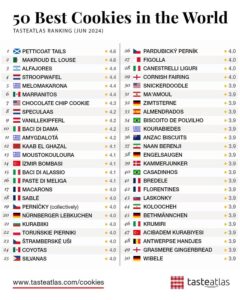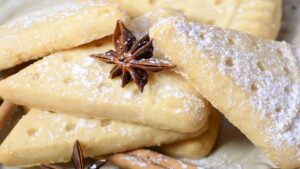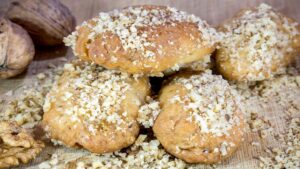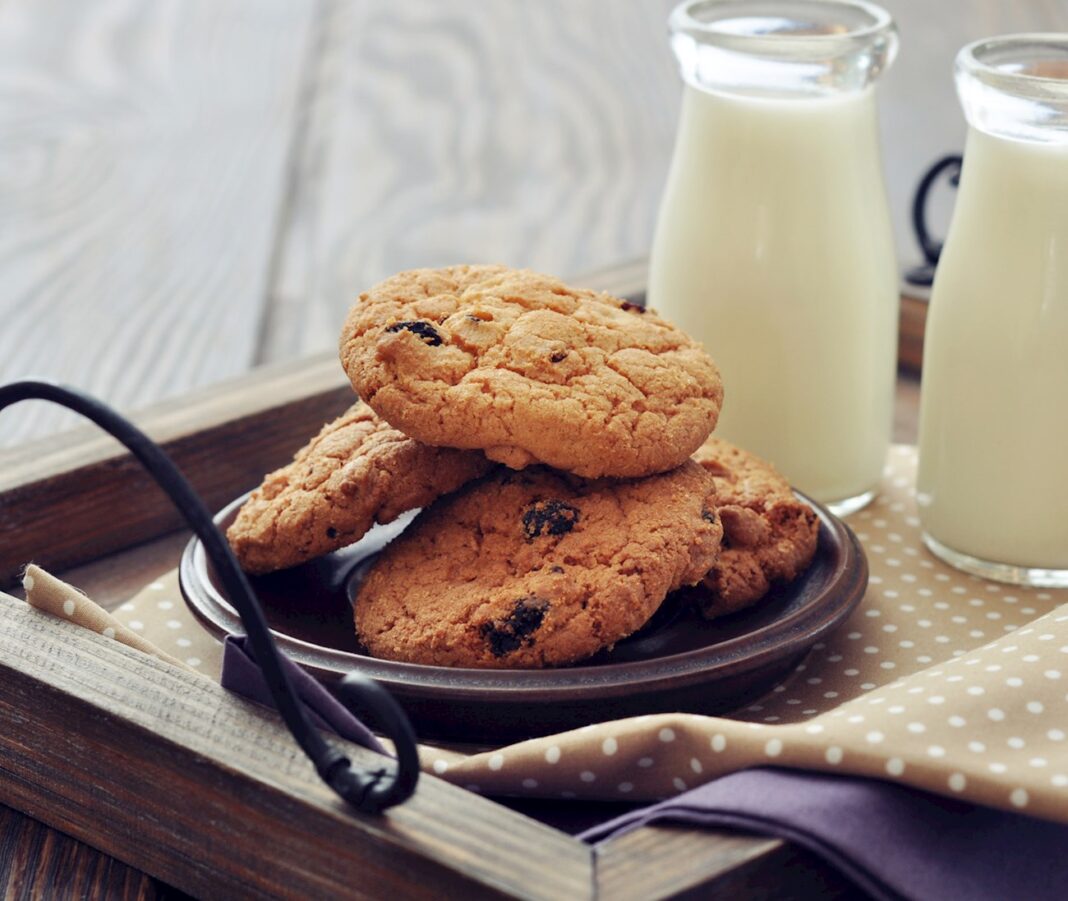A cookie (American English) or biscuit (British English) is a baked snack or dessert that is typically small, flat, and sweet. It usually contains flour, sugar, egg, and some type of oil, fat, or butter. It may include other ingredients such as raisins, oats, chocolate chips, or nuts.
Most English-speaking countries call crunchy cookies “biscuits”, except for the United States and Canada, where “biscuit” refers to a type of quick bread. Chewier biscuits are sometimes called “cookies” even in the United Kingdom. Some cookies may also be named by their shape, such as date squares or bars.
The famous gastronomy site TasteAtlas presents the Top 50 cookies in the World. On the Top are the Petticoat Tails -SCOTLAND and following Makroud el louse -ALGERIA (second rate), Alfajores -ARGENTINA. Here’s the Top 5 of the best rated cookies.

01 Petticoat Tails -SCOTLAND
The dainty petticoat tails gained their peculiar name and distinctive shape by resembling the pieces of fabric used to create the elaborate 16th-century petticoats, including that of Mary Queen of Scots, who was reputed to have been particularly fond of these sweet, buttery shortbread biscuits.
However, another less romantic theory claims their name could’ve been derived from petits cotés, the old French term for little biscuits. Regardless of their real origins, petticoat tails remain a Scottish favorite until this day.

02 Makroud el louse -ALGERIA
Makroud el louse are flourless Algerian cookies consisting of almonds, eggs, sugar, and a flavoring of orange flower water. Baked until lightly browned, these cookies are typically tossed in powdered sugar in order to be completely coated. Once consumed, makroud el louse should melt in the mouth.
It is recommended to serve these cookies with a cup of tea or coffee on the side.

03 Alfajores -ARGENTINA
Argentinian alfajores are sandwich cookies consisting of two round, crumbly sweet cookies with a dulce de leche or milk jam stuffing between them. The combination is then coated with a layer of chocolate or sprinkled with confectioners’ sugar.
The name alfajor stems from the Arabic word al-hasú, which means stuffed or filled. Although the cookies can be found throughout Latin America, they are originally from Andalusia, Spain. When the Spaniards came to America, they brought their foods and traditions along the way, and with time, almost every country in Latin America has adapted the Spanish alfajor to make it their own.

04 Stroopwafel -GOUDA, NETHERLANDS
These delicious Dutch cookies consist of a very thin layer of syrup, sugar, butter, and cinnamon that is sandwiched between two thin wafers. Stroopwafels were invented in the late 18th century in the city of Gouda, and many sources give credit to a baker named Gerard Kamphuisen as their inventor.
In the Netherlands, stroopwafels are traditionally consumed with tea or coffee, and it is a custom to place a cookie on top of the cup and let it steam for a few minutes, so that the cookie is heated and the syrupy layer softens.

05 Melomakarona -GREECE
Though they are thought to have originated in ancient Phoenicia, melomakaronas are nowadays a typical Greek Christmas treat. These delicious semolina cookies are traditionally flavored with honey, orange zest, cinnamon, olive oil, and sometimes cognac.
Immediately after baking, melomakarona cookies are doused in honey syrup, then sprinkled with ground walnuts. Although some argue that another Greek treat that goes under the name finikia refers to a slightly different dessert, occasionally fried and served without walnuts, today both names are used interchangeably.




